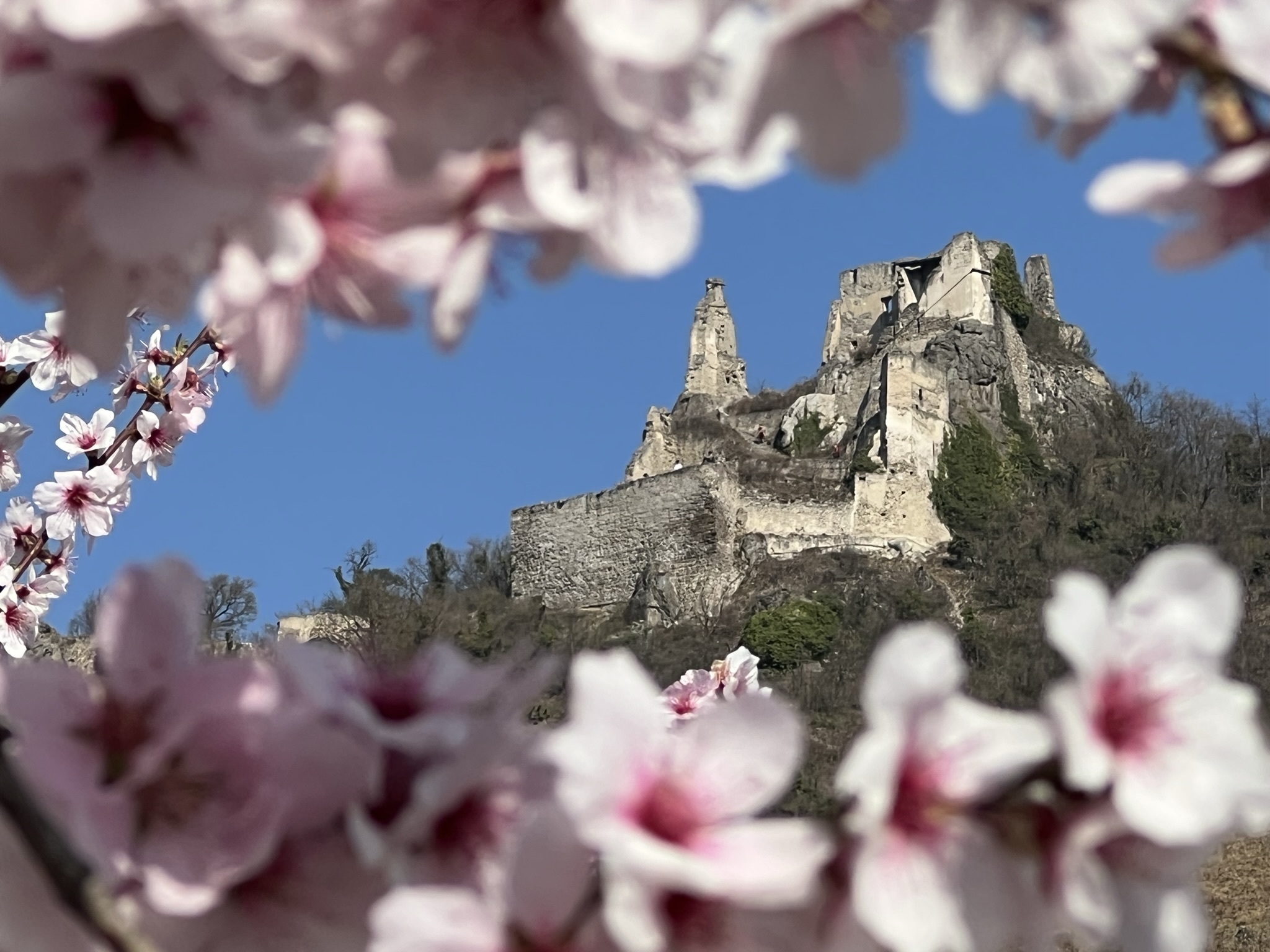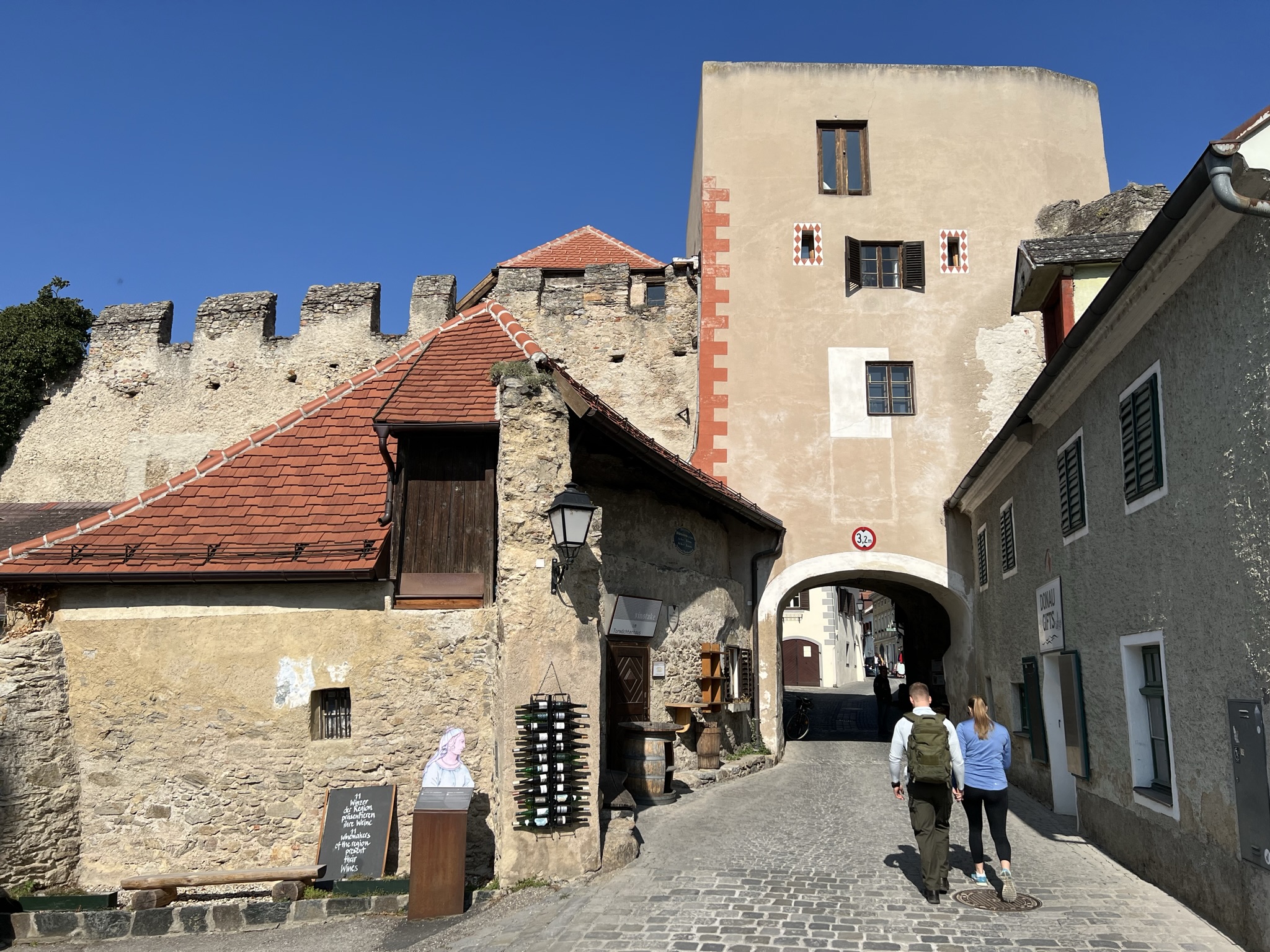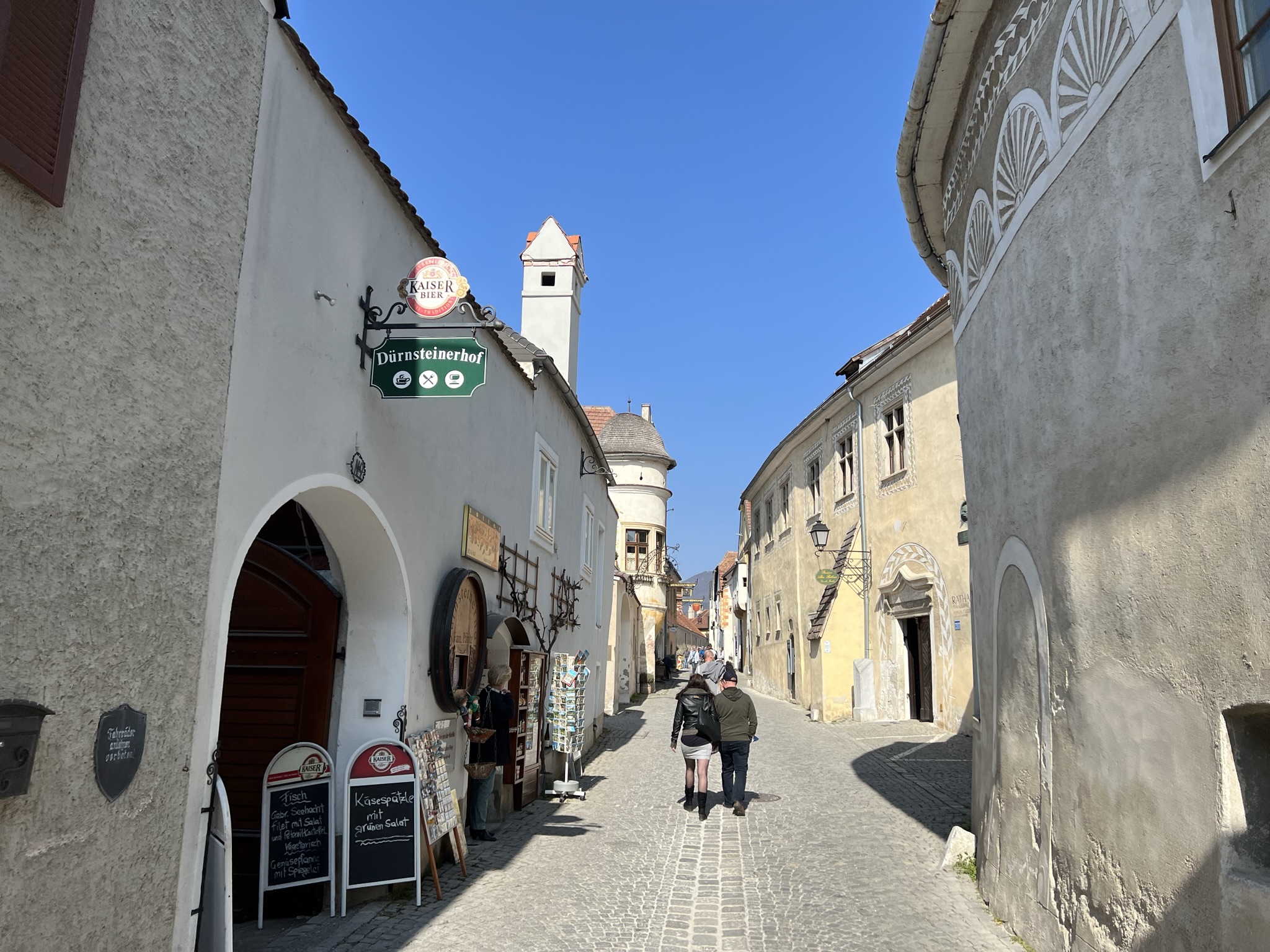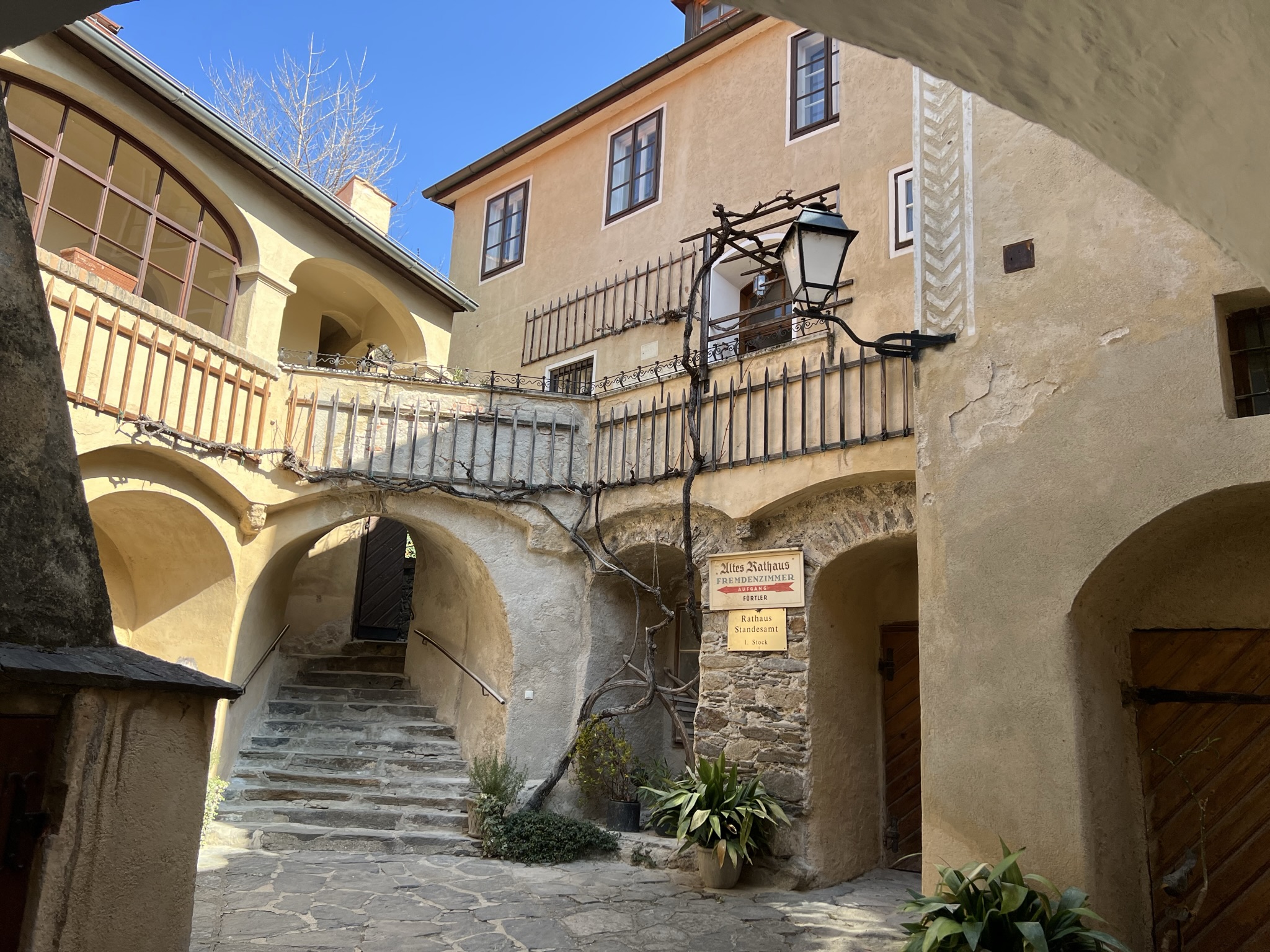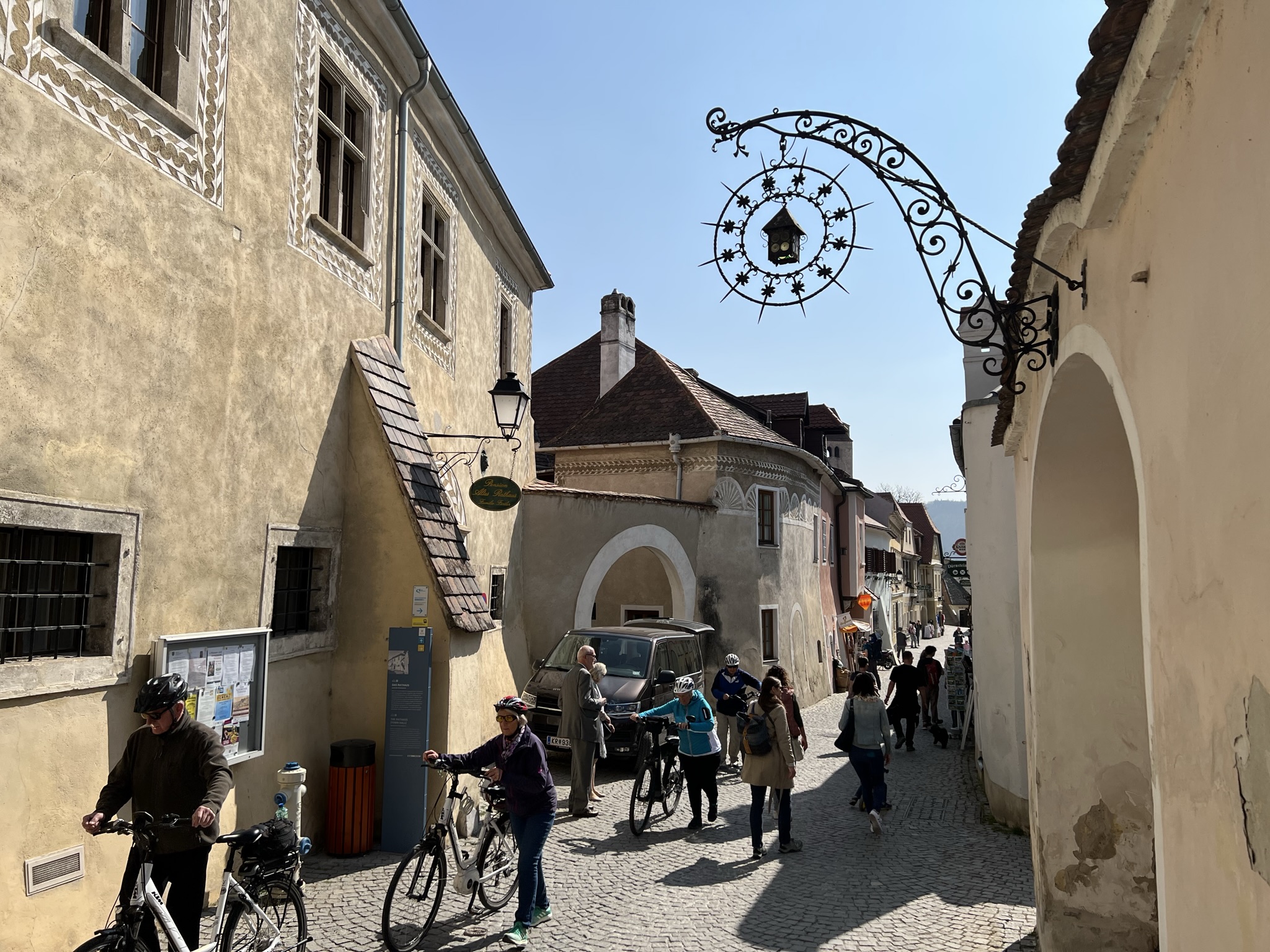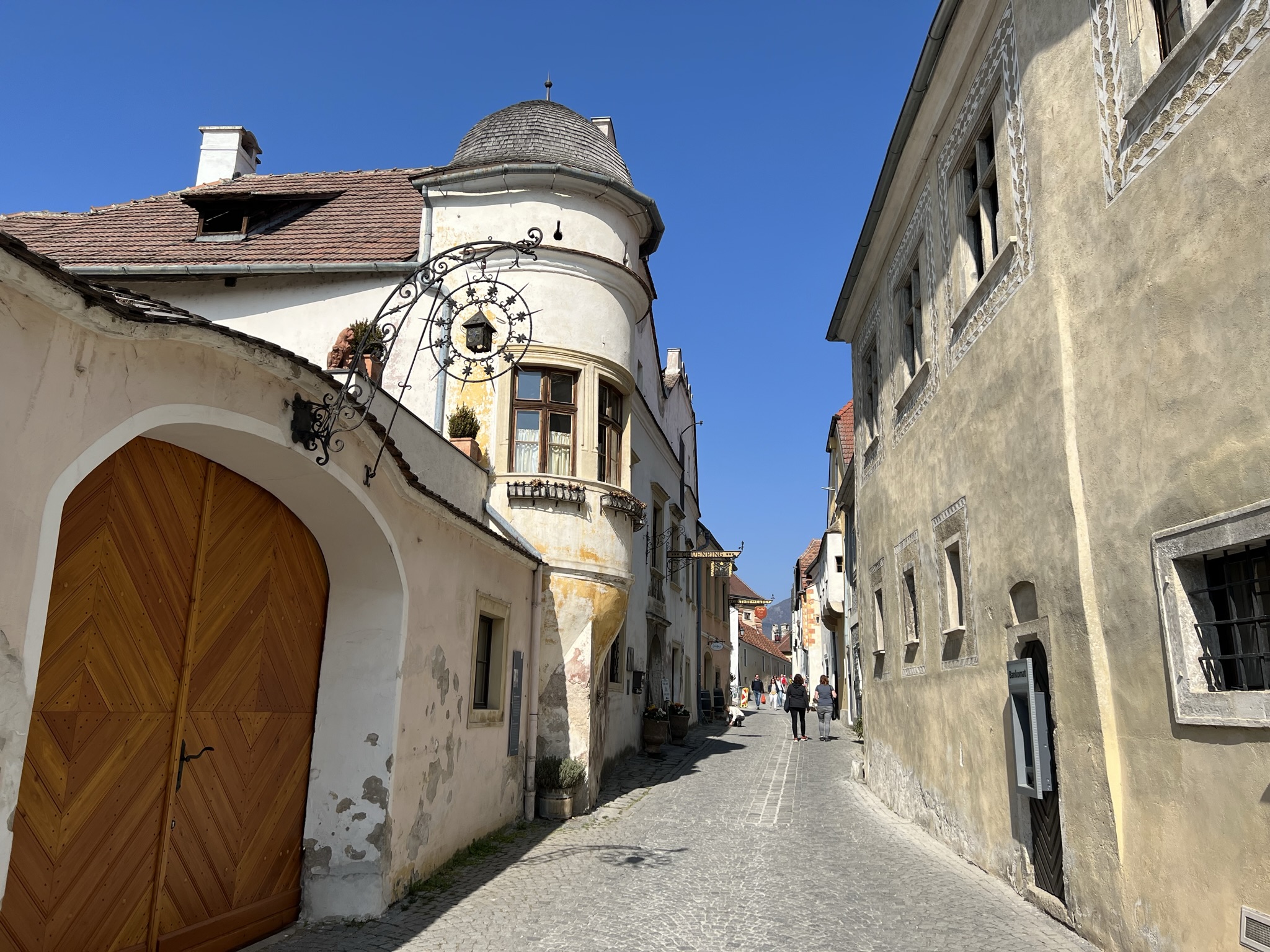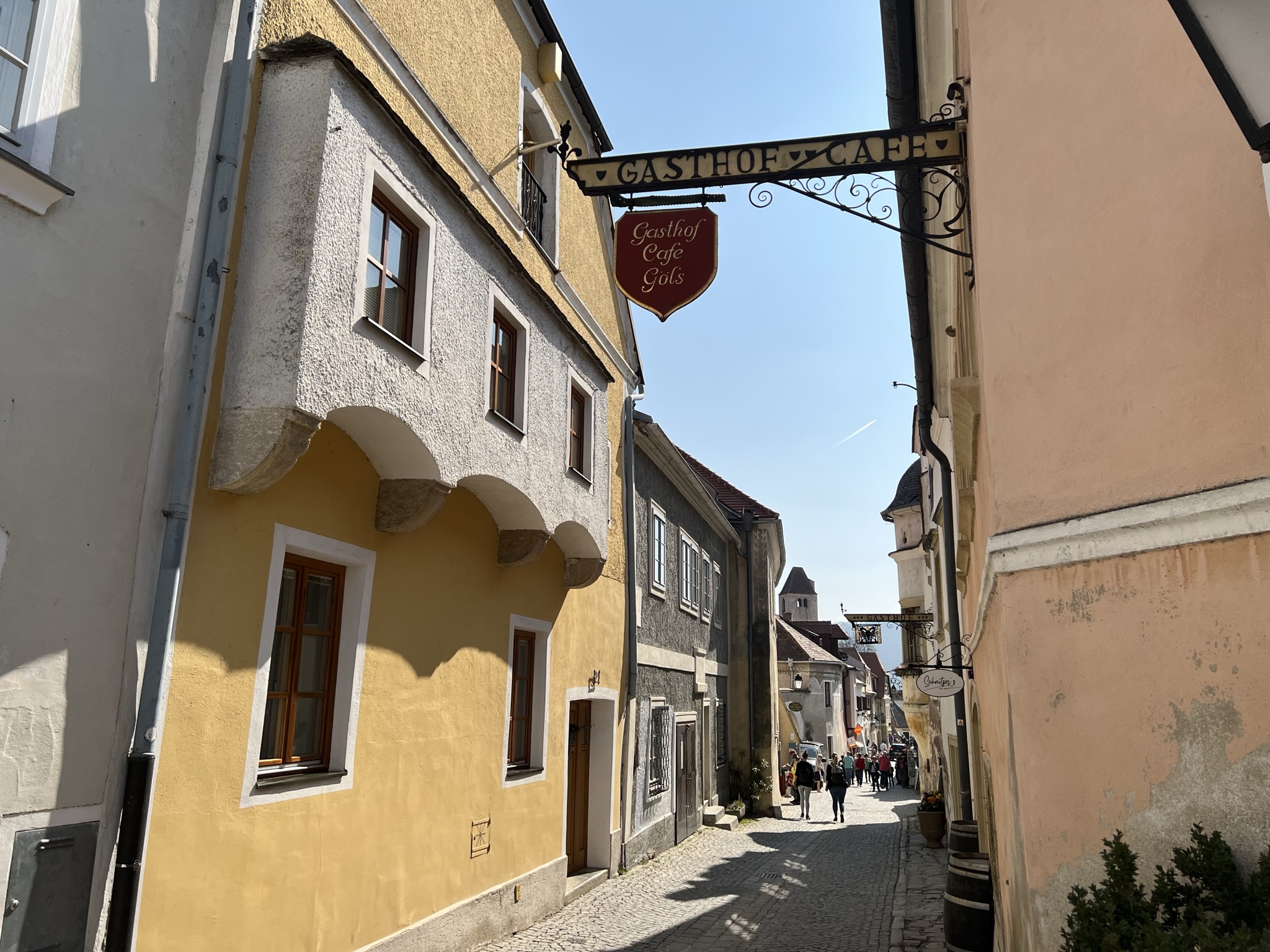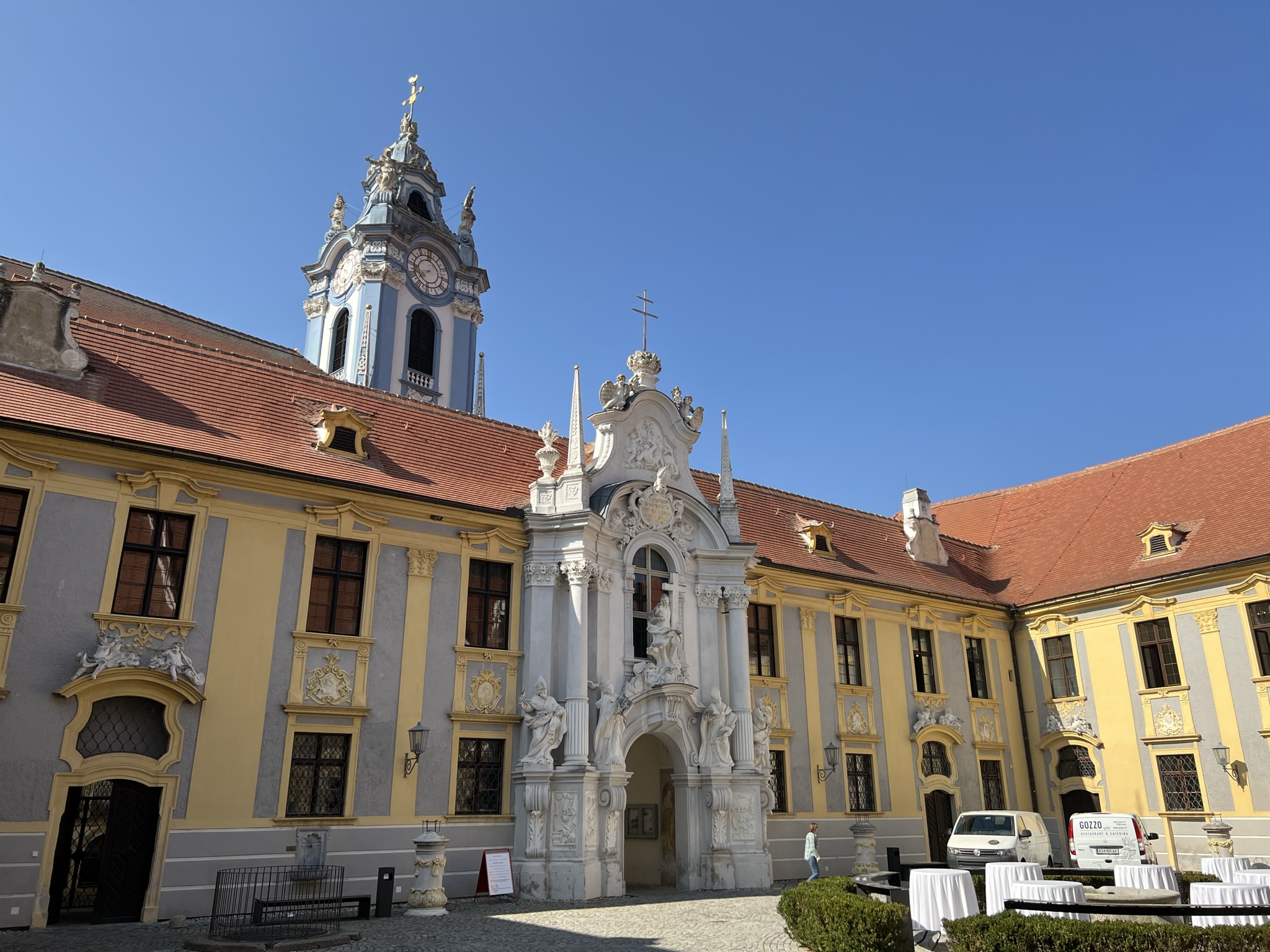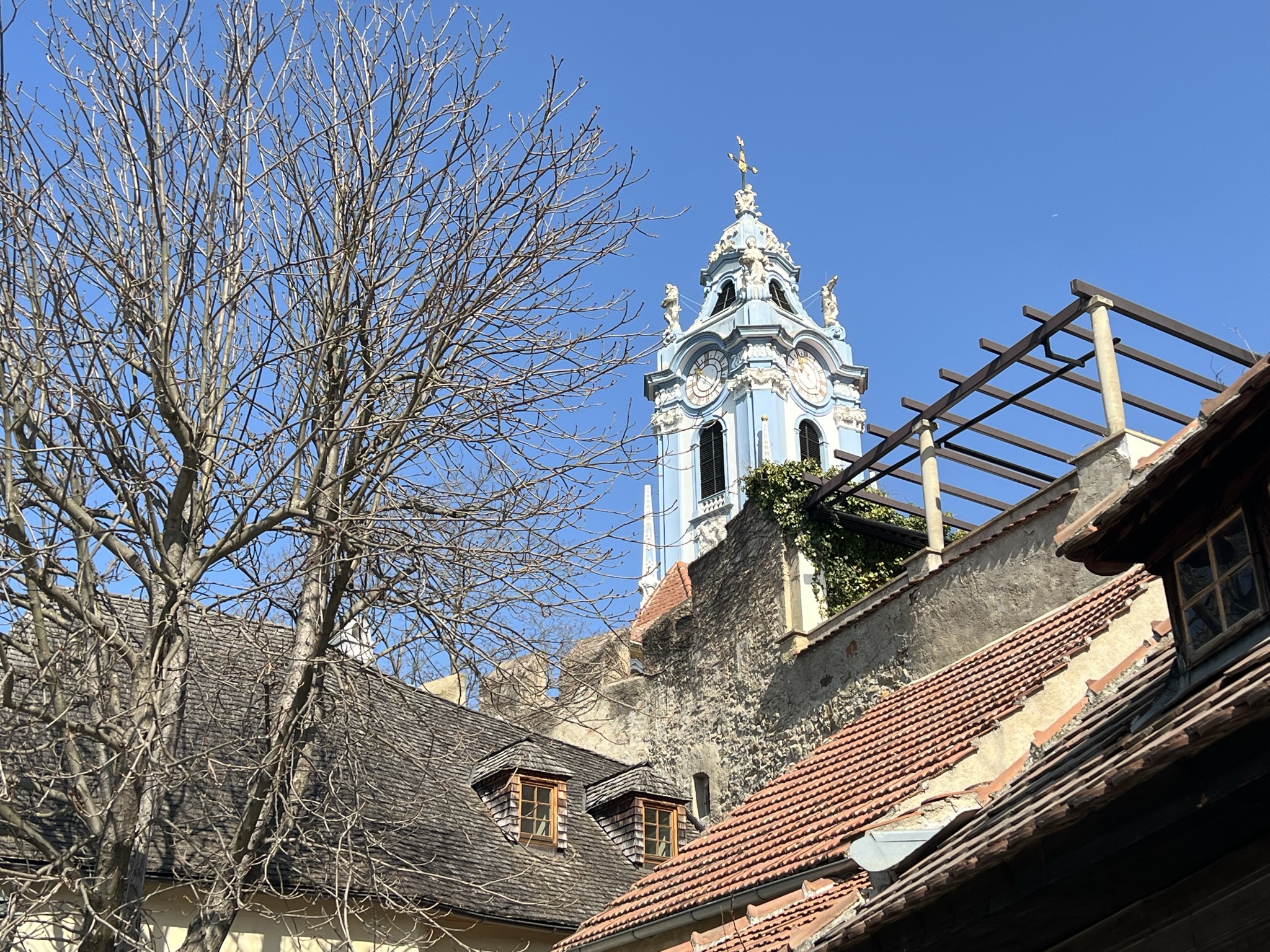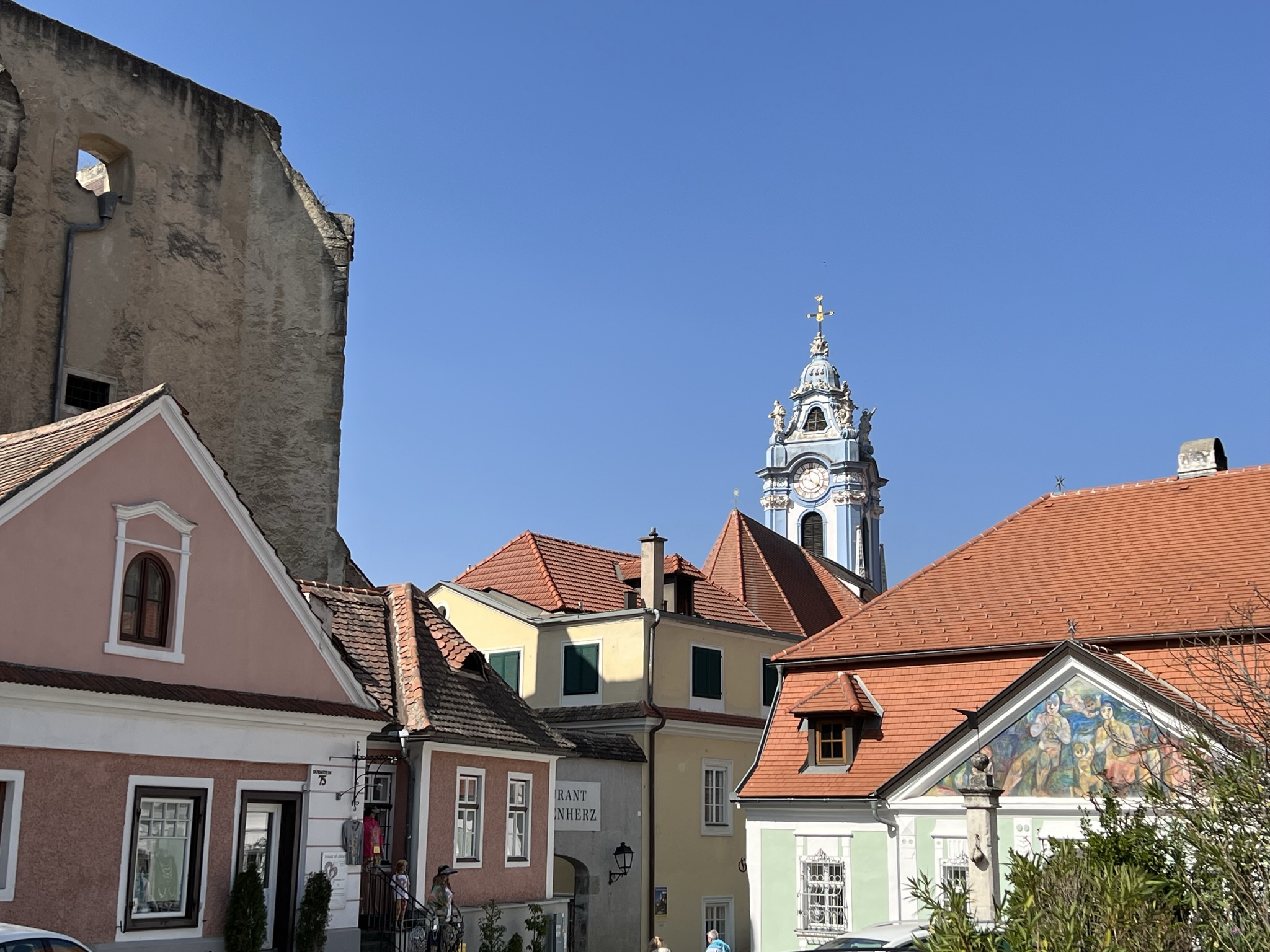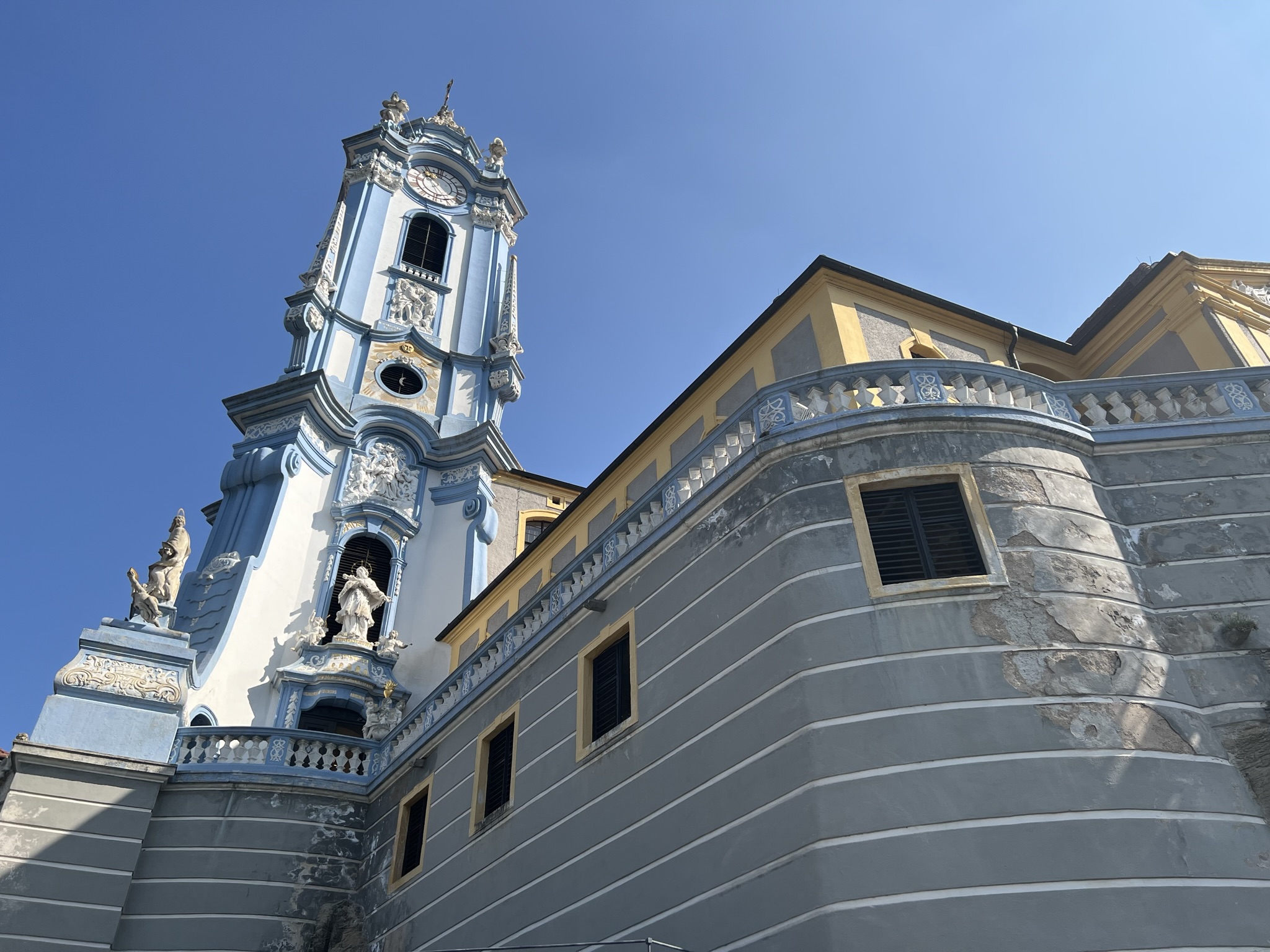Dürnstein
- Where is Dürnstein? In the Wachau in Lower Austria.
- Is the visit worthwhile? Yes, you can visit Dürnstein at any time of the year. Especially during the apricot blossom at the end of March, the Wachau very popular.
- Can you park in Dürnstein? No, the city is largely free of cars. Only residents are allowed to drive through
- Where can you park? The parking spaces can sometimes be very full. There are 3 parking spaces (2 before and one after the tunnel). 2 hours cost 4€, then the prices increase.
- What are the highlights? The blue collegiate church as well as the Dürnstein Castle Ruins, in which the English King Richard I the Lionheart was held prisoner.
Dürnstein is a place with less than 1,000 inhabitants in the Wachau in Lower Austria. Nevertheless, it has become one of the most famous tourist destinations in Austria. There is hardly a visitor to the Wachau who does not stop in Dürnstein. In 1994, Dürnstein was awarded the European Diploma. In 2000, the town, together with the Wachau, was named UNESCO World Heritage Site appointed.
The Collegiate Church
Meanwhile, The blue tower of the collegiate church has become a landmark of the region.
However, many people ask themselves why is it blue?
The blue and white are a theological program, implemented in baroque architecture. The brown of the monastery symbolizes earthly striving, the blue tower the triumph of Jesus over death. When building the tower, Provost Hieronymus Übelbacher therefore only used the best: smalt blue.
In the Dürnstein Abbey Church services and exhibitions take place regularly.
Dürnstein ruins
Almost even more well-known is the Dürnstein ruins, which is located above the actual city.
In the middle of the 12th century, Dürnstein Castle was built by the Kuenringers. However, it only became famous through its involuntary guest King Richard the Lionheart, who was imprisoned in Dürnstein Castle from December 21, 1192 to February 4, 1193. In reality, however, it is no longer known whether the king was really held in the castle, an outbuilding or in the valley.
Explore the city on foot
Overall, the medieval-looking town is perfect for a stroll. If you park in parking spaces 1 or 2, you enter the town from the east through the Kremser Tor (formerly Steiner Tor). This is a four-storey, square gate tower from the 15th century. The town wall leads south to the Danube and north to the ruins. The tower is now used as a residential building.
Along the main path there are numerous souvenir shops offering specialties from the region, especially wine and apricot liqueurs and schnapps.
You should also take a look at the picturesque courtyard of the town hall (right on the main path). From 1547 onwards, the town hall was set up in a late Gothic house in the centre of the town and was rebuilt in the Renaissance style in 1563. The inner courtyard with the picturesque staircase to the town hall is a popular photo subject. Also worth seeing is the Kunigunden Church, the oldest church in Dürnstein.
At the other end of the city is the Lock, which was built in 1622 on the site of ten winegrowers' houses. It has a small courtyard and is flanked by two towers on the Danube side. In 1937, Ernst Rüdiger von Starhemberg sold the castle to the Thiery family. In the 1960s, it was converted into a hotel. It is still operated as such today.
Maps
Durnstein
- Where is Dürnstein located? In the Wachau in Lower Austria.
- Is it worth visiting? Yes, Dürnstein can be visited at any time of the year. The Wachau is particularly popular with the apricot blossom at the end of March.
- Is it possible to park in Dürnstein? No, the city is largely car-free. Only residents are allowed to drive through
- Where can you park? Sometimes the parking lots can get very crowded. There are 3 parking spaces (2 before and 1 after the tunnel). 2 hours cost 4 €, then the prices are staggered.
- What are the highlights? The blue collegiate church and the ruins of Dürnstein Castle, in which the English King Richard I the Lionheart was imprisoned.
Dürnstein is a place with less than 1,000 inhabitants in the Wachau in Lower Austria. Despite this, it has become one of the most famous tourist destinations in Austria. There is hardly a Wachau visitor who does not stop in Dürnstein. In 1994 Dürnstein was awarded the European Diploma. In 2000, the city was declared a UNESCO World Heritage Site with the Wachau.
The Collegiate Church
In the meantime, the The blue tower of the collegiate church has become a symbol of the region.
However, many wonder why is it blue?
The blue and the white are theological programs implemented in baroque architecture. The brown of the monastery symbolizes earthly striving, the blue tower Jesus' triumph over death. Provost Hieronymus Übelbacher was therefore only the best good enough when erecting the tower: smalt blue.
Church services and exhibitions take place regularly in Dürnstein Abbey.
Durnstein ruins
Almost even better known are the Dürnstein ruins, which are located above the actual town.
Dürnstein Castle was built by the Kuenringer family in the middle of the 12th century. However, it only became known through its involuntary guest, King Richard the Lionheart, who was imprisoned at Dürnstein Castle from December 21, 1192 to February 4, 1193. In reality, however, it is no longer known whether the king was really held in the castle, in an outbuilding, or in the valley.
Explore the city on foot
All in all, the medieval-looking town invites you to go for a walk. If you park in car parks 1 or 2, you enter the city from the east through the Kremser Tor (formerly Steiner Tor). It is a four-storey, square gate tower from the 15th century. The city wall leads south to the Danube, north to the ruins. The tower now serves as a residence.
Along the main path there are numerous souvenir shops offering specialties from the region, above all wine and apricot liqueurs and schnapps.
You should also take a look at the picturesque inner courtyard of the town hall (to the right of the main path). From 1547 the town hall was set up in a late Gothic house in the city center and rebuilt in 1563 in the Renaissance style. The inner courtyard with the picturesque staircase to the municipal office is a popular photo motif. Also worth seeing is the Kunigundenkirche, the oldest church in Dürnstein.
At the other end of town is thecastle, which was built in 1622 on the site of ten winegrowers' houses. It has a small courtyard and is flanked by two towers on the Danube side. In 1937 Ernst Rüdiger von Starhemberg sold the castle to the Thiery family. In the 1960s it was converted into a hotel. It is still operated as such today.

